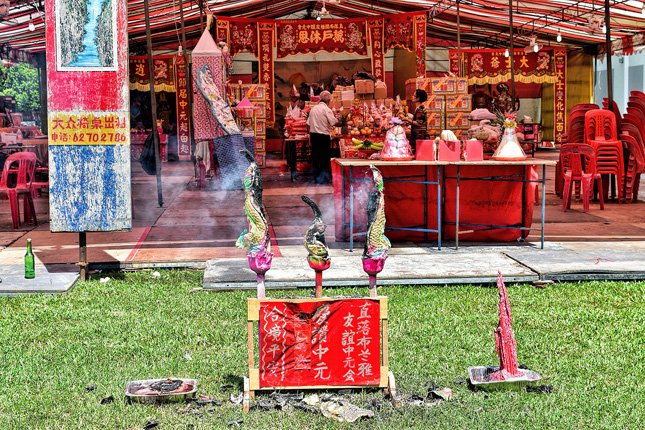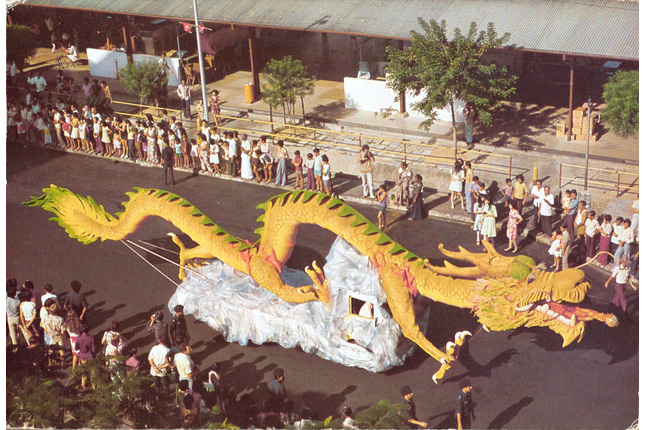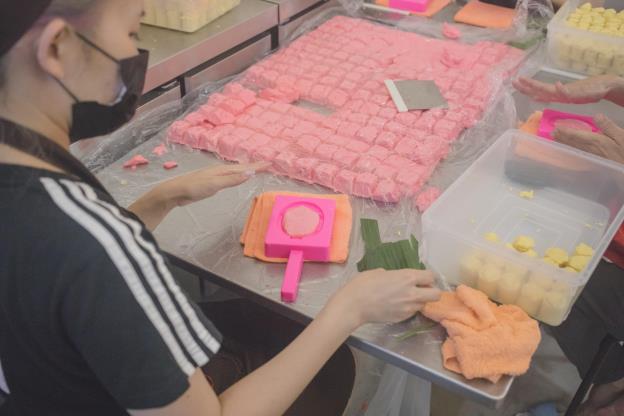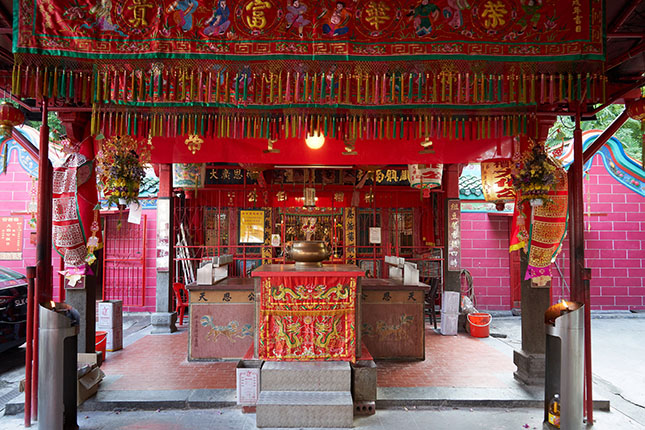Zhong Yuan Jie (Hungry Ghost Festival)
Zhong Yuan Jie (中元节) takes place on the seventh month of the Lunar calendar. It is mostly observed by Chinese Buddhists and Taoists who believe that during this time, colloquially known as “seventh month” or 七月 (“seventh month” in Chinese), the gates of Hell are opened, releasing spirits who roam the earth.
The period is also commonly referred to as “Hungry Ghost Festival”, with reference to the belief that spirits are hungry because they do not have descendants to make offerings to them. However, it is not just mischievous spirits who roam the earth during the seventh month – it is also believed that dead ancestors may come back to observe the living.
Hence, there are various practices associated with entertaining and appeasing these spirits. For instance, believers will burn joss sticks, paper offerings and make food offerings. There will also be large-scale performances called getai (歌台)which provide entertainment to both the spirits and the living.
Geographic Location
Zhong Yuan Jie is practised in Asian countries and communities with a large Chinese, Buddhist or Taoist population, including in China, Hong Kong, Taiwan, Thailand, Malaysia, and Singapore.
In Singapore, individuals may conduct their own rituals of worship in their own homes, at temples, or in the neighbourhood. Believers living in different parts of Singapore may gather to engage in collective burning of offerings using big stainless steel containers provided by the Town Council. Getai shows are typically performed outdoors in temporary tent and stage setups, such as at empty fields in in the public housing estates.
Communities Involved
In Singapore, the festival is mostly observed by Chinese Buddhists and Taoists. Certain temples conduct specific rituals such as prayers and burning of offerings. Temples may also have believers sponsor a separate batch of food items, which are distributed to the needy.
Associated Social and Cultural Practices
Individuals make offerings to their ancestors at temples or in their homes. Offerings may take the form of paper effigies of material goods (houses, cars, servants, computers, and phones), paper money (known as kim zua) or food. Offerings to wandering spirits may also be made along roadsides and other transitory points. In order to entertain the ghosts, performances known as getai are conducted, with the front row of seats left empty for the spirits. Getai used to be a stage for traditional opera and puppet performances, with a majority of songs performed in dialects such as Hokkien. In Singapore, the content of the performance has evolved to include modern pop songs in Chinese and even Korean.
There are various superstitions and beliefs surrounding Zhong Yuan Jie. Out of respect to the spirits, it is believed that one should not touch the offerings left by the road, and avoid stepping on incense paper. Superstitions also involve not getting married or moving houses during the month, not wearing clothes in the colour red, not swimming (especially at night) and not eating the food left out for the spirits.
While the festival is observed in communities with significant Chinese Buddhist and Taoist populations all over Asia, Zhong Yuan Jie in Singapore has evolved with the times. For example, the forms of entertainment to appease the spirits have evolved from involving traditional Chinese opera and puppetry shows to presenting more modern getai performances featuring English, Mandarin, dialect and even Korean pop songs.
Present Status
Though the percentage of Buddhists and Taoists in Singapore has been gradually declining in recent years, with the average age of believers tending towards middle age, there are an increasing number of young performers who participate in getai performances. This has helped to draw in younger audiences. Combined with the evolution of paper offerings to include modern items like iPhones and computers, the festival continues to evolve to suit modern demands and beliefs.
References
Reference No.: ICH-034
Date of Inclusion: April 2018; Updated March 2019
References
Heng, Terrence. “Hungry Ghosts in Urban Spaces: A Visual Study of Aesthetic Markers and Material Anchoring”, Visual Communications 13 (2): 147-162, 2014.
Heng, Terence. “Walking Through Spiritual Neighbourhoods: A Photo Essay”. In Sue Nichols and Stephen Dobson (eds), Learning Cities: Multimodal Explorations and Placed Pedagogies. Springer, 2018.
Koh, Jaime and Ho, Stephanie. Culture and Customs of Singapore and Malaysia. California: Greenwood Press, 2009.
Kuah-Pearce, Khun Eng. State, Society and Religious Engineering: Towards a Reformist Buddhist in Singapore. Singapore: Institute of Southeast Asian Studies, 2009.
Mathews, Mathew. The Singapore Ethnic Mosaic: Many Cultures, One People. Singapore: World Scientific, 2017.















